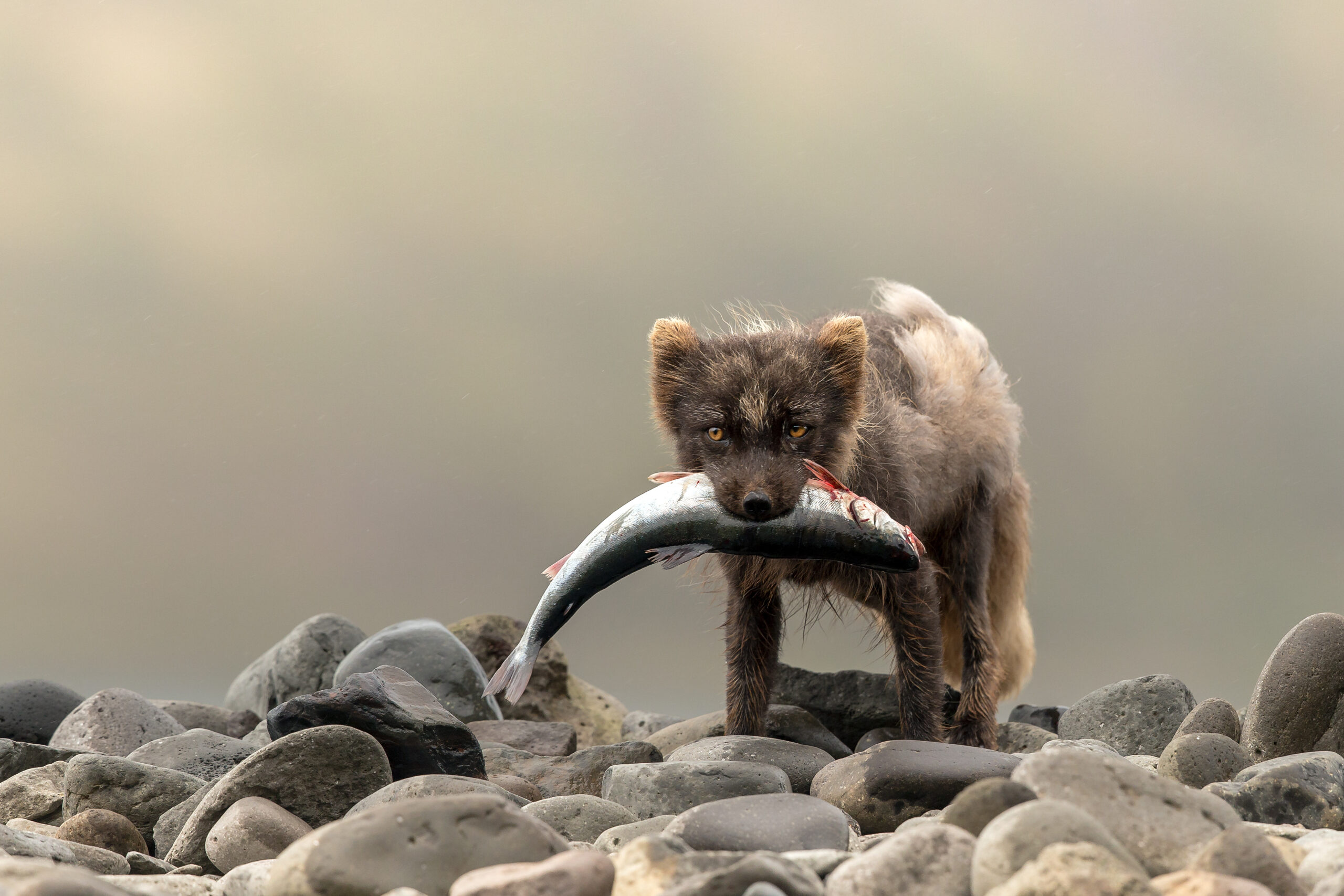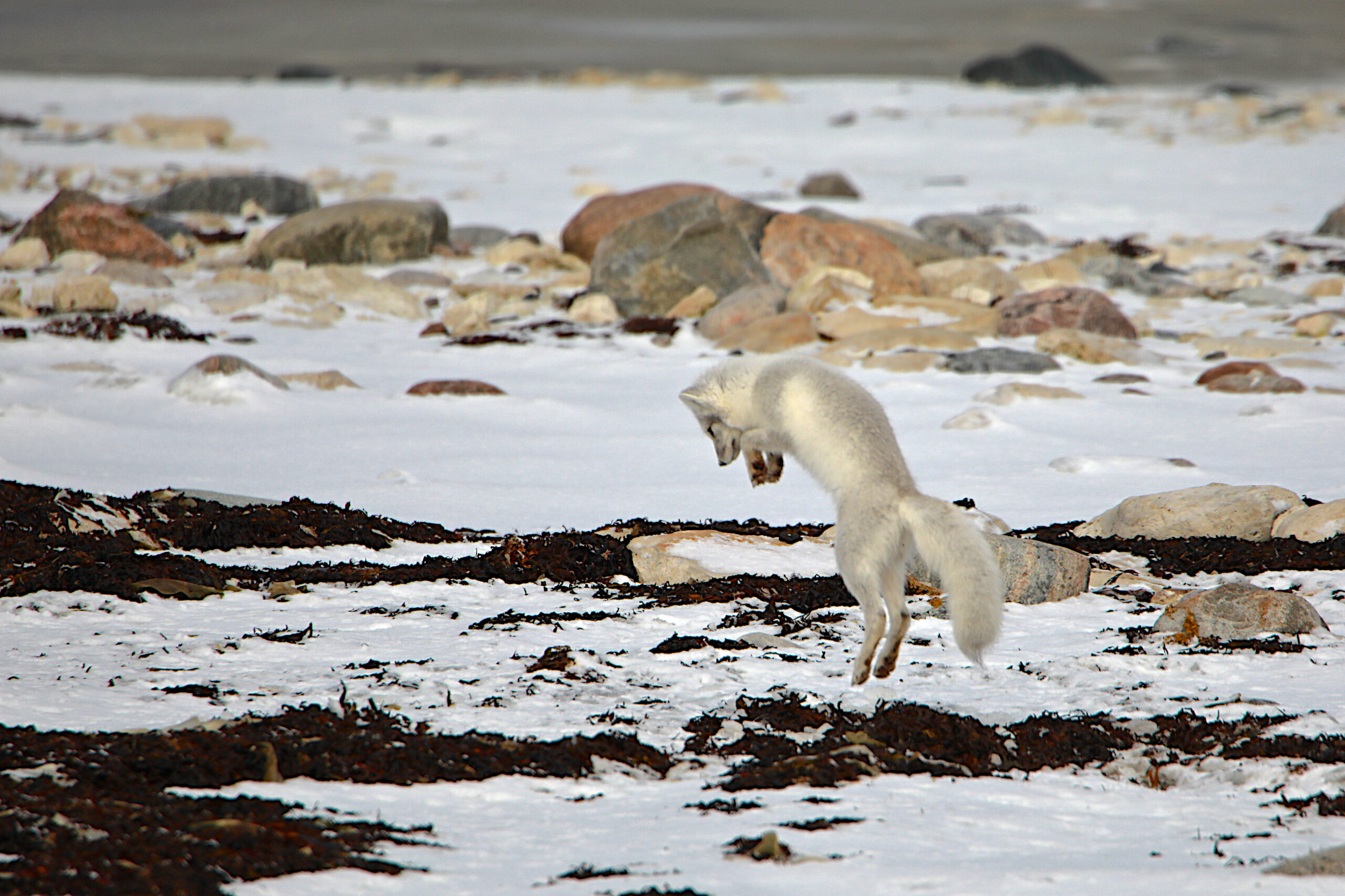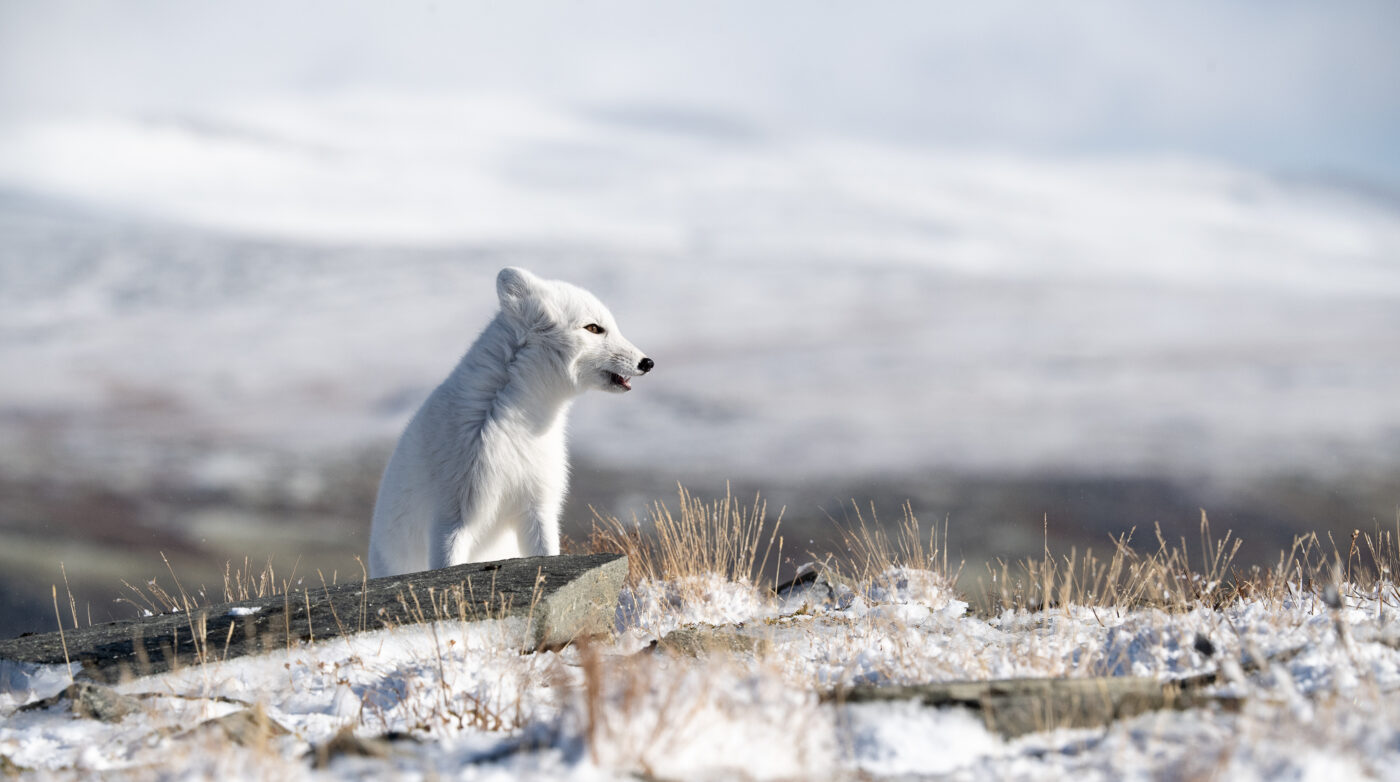Arctic Fox Cub in Autumn Snow in Dovre Mountains, Norway. Adobe Stock, by Stuedal

Very Important Predators
by Billy Timms
The Arctic Fox (Vulpes lagopus)
The arctic fox is one of the most well adapted species for survival in subzero habitats. It has extremely dense fur on its body and thick fur on the pads of its paws that conserve heat. These beautiful canids have compact bodies with short legs and small furry ears to help reduce heat loss and protect against the extreme cold of the arctic tundra.
Arctic foxes have excellent natural camouflage, sporting a long coat of snow-white fur to blend into the icy alpine and arctic winters and thinner bluish- brown and gray fur in the summer.

Arctic Fox in Summer at Iceland, Adobe Stock, by Mark Medcalf
These important predators are skilled hunters who can detect odorants from over twenty miles away, hear prey digging under their feet, and sprint at speeds over thirty miles per hour.

An Arctic Fox Hunts on the Tundra Near Churchill Manitoba, Adobe Stock, By Rob Schultz
In the harsh environment in which it lives, the arctic fox is a very important predator because of its role in the food chain. While preyed upon by larger animals, the arctic fox is also significant in the population control of smaller species which may otherwise struggle to survive in the extreme conditions of the arctic.
Beyond the predator and the prey.

NatEnvo was formed by BioTriad Environmental, Inc. to provide entertaining and informative media while keeping the wonders of nature in the public eye.

Our world is their hunting ground. Our back yards are their killing fields. They are the masters of land, sea, and sky, the balancers of ecosystems, and the most important predators on earth.


